09 Feb
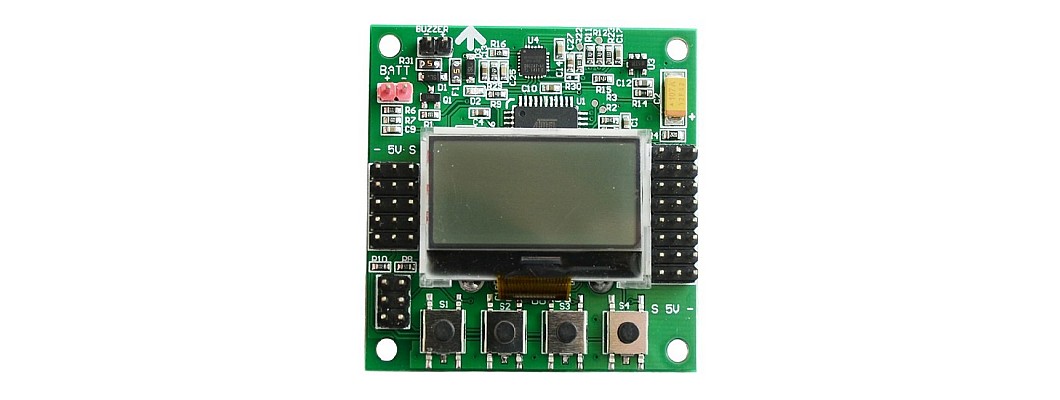

Hello,
In this article, we are going to discuss how to select an appropriate flight controller.
In this article, we are going to discuss how to select an appropriate flight controller.
With the technological advancements made in the past decade, the drone technology has made quite a big leap in terms of battery technology and flight experience. Today multi-rotor drones are used in a lot of fields like photography, surveillance, remote sensing, delivery systems, rescue and relief missions and even for entertainment purposes like racing. All drones have four segments: the airframe, the power electronics, the power unit and the control unit.
All the above segments mainly depend on the flight controller as it take input from GPS, gyroscopes, accelerometers and the input from the pilot and then combines it using complex algorithms to provide with the necessary output. It is therefore very crucial to understand how these work in order to choose the suitable flight controller for the flight. The factors which affect the choice are the purpose, the desired flight characteristics and the number of instruments to be used. We will divide the flight controllers based on their purpose in this article. The division will be done in separate classes according to their properties, purpose and description.
Class 1: Beginner
Class 1 flight controllers are for those people who are new to the world of multi-rotor drones. These controllers are pre-programmed and the user can use them right out of the box without doing a complex wiring and calibration process. They do not have highly complex technical sensors. They also contain instruments like gyroscope and accelerometer which are essential. There are not other complex instruments. These kind of flight controllers are excellent for new pilots who have little or no training in flying drones. They have the basic tuning options and a very user friendly software which can be used. Some of its important characteristics are:
- Basic input and output ports
- Designed for beginners
- Low responsiveness
- Low cost with decent performance
- Limited instruments
- Limited scope for innovation
- User friendly interface
1. KK Flight controller series: KK2.0, KK2.1, KK2.1.5
This is one of the best beginner boards for user which has an in-built LCD screen to set up and tune the board and the drone at any place. This series of boards has 3 different types of boards with minor differences between them. The KK board requires a low voltage of 3.3-5V and supports BECs too. It also supports camera gimbals which are used for stabilization of the camera mid-air.
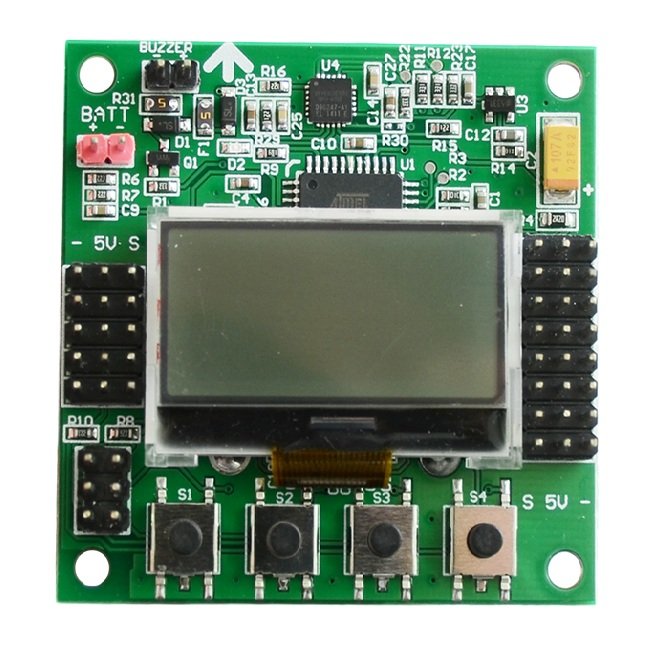
2. Beta Flight: Open Pilot CC3D
These flight controllers are very versatile. They can fly any airframes. From fixed-wing to octocopter using the Open Pilot ground control station software. This board requires a lot of pre-configuration and is not recommended as the KK flight controllers provide much more advantages over it.
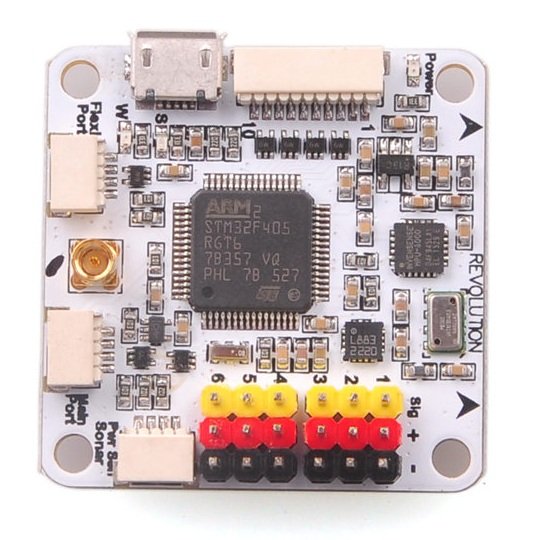
Class 2: Acrobatics and Racing
This class of flight controllers includes agile multi-rotor drones which can be used for entertainment purposes. They are very compact and very light in weight. These flight controllers have very fast processors and have high responsiveness. These flight controllers also have highly sensitive sensors which help in fast and agile movement of the drone. Some of the characteristics of these flight controllers are:
- Compact and lightweight.
- Faster in-built processor for agility.
- Software algorithms tuned for high responsiveness.
- Easy connection process.
- Comes with shock and crash resistant structures.
1. SP Racing F3 flight controller ACRO version
This flight controller is designed to give a fast flight performance with an accurate set of sensors and high I/O capabilities with an extremely light CPU with high bit rate and input signal processing. This FC has an STM32 F3 processing unit and a faster ARM-Cortex M4 cores SOC. Some of its other great features are additional built-in sensors like barometer mounted on the bottom of the board. It also includes dedicated output for LEDs which are programmable. This is good for orientation, racing and night flying. The vast number of I/O supports several features at one go.
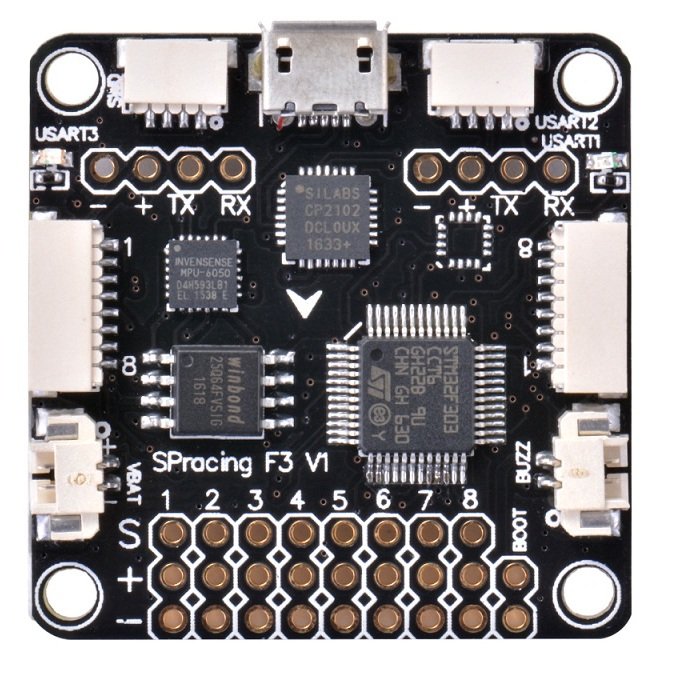
2. Naze32 6DOF Flight control board
This flight controller is designed for serious and experienced multi-rotor pilots. Its if designed by the Afro flight and is the most used racing flight controller today. It has a 32bit ST microprocessor and a set of impressive sensors. It comes with a 16 Mbit memory and a BMP280 barometer.
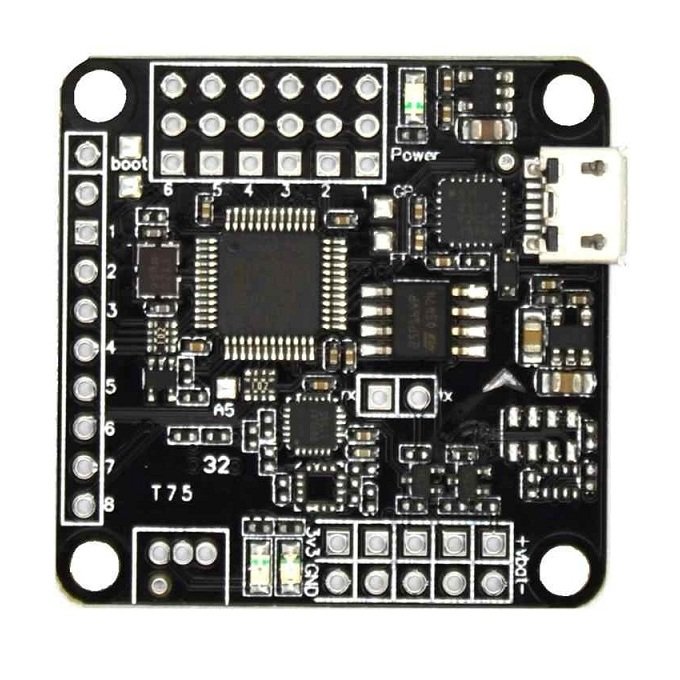
Class 3: Advanced Flying
This flight controllers are designed for absolute experts who are experienced enough to fly any kind of airframes. These flight controllers have highly advanced microprocessors, a lot of I/O ports with massive expansion options for additional sensors, GPS and many other instruments.
Due to the versatility of these flight controllers, they are used widely for many purposes in research work, remote sensing, transport and delivery drones, photography and security purposes. Enthusiasts and hobbyists even experiment with their own sensors and electronics because of the presence of advanced purpose I/O ports.
Some of the characteristics of advanced flight controllers are:
- Most advanced electronics onboard.
- A vast array of precision built-in sensors.
- Option for massive expansion I/O ports.
- Low price and high performance.
- Excellent software suite and support.
- Lightweight with great computational power.
- Best for all pilots overall.
1. APM Flight controller series
APM 2.8 Flight controller is an overhaul version of the previous versions. The APM 2.8 Multicopter FC is a finished open-source autopilot framework and one of the most esteemed innovations in Flight controllers. It even won the Outback challenge UAV rivalry.
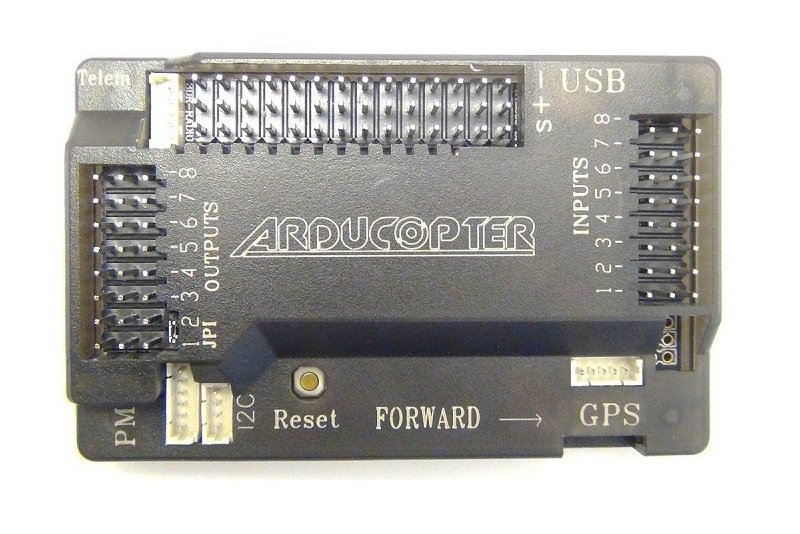
APM can convert any fixed or multirotor vehicle into a completely self-ruling vehicle. It is also equipped for performing customized GPS missions with pre-set waypoints. Some of its features include:
- High quality auto level and auto altitude control.
- No programming is required.
- Unlimited GPS waypoints.
- "Loiter" anywhere.
- Return to launch.
- Two-way wireless connection option.
- Automatic takeoff and landing.
- Fully scriptable camera controls.
- Cross-platform support.
- Compatibility with industry-leading robotics standards.
These are some of the flight controllers available on the market right now. The drone making process has become much easier with such flight controllers. I hope this article gives you much needed knowledge about flight controllers and I hope you liked it. Thank you.


Leave a Comment